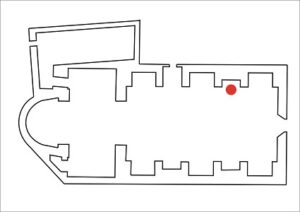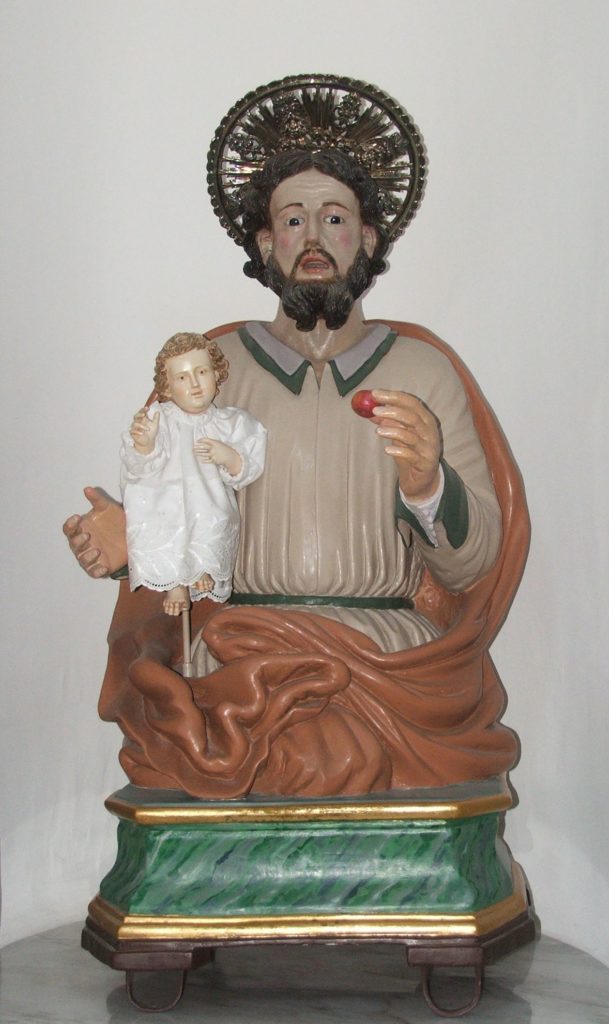San Giuseppe con Bambino


Chiesa di S. Maria Maggiore
Busto
San Giuseppe con Bambino
Sec. XVIII (seconda metà)
Legno scolpito e dipinto
Ambito culturale napoletano

Church of S. Maria Maggiore
Bust
Saint Joseph with Child
18th century (second half)
Carved and painted wood
Neapolitan cultural sphere
Il culto di San Giuseppe, sposo di Maria, è documentato a Grottaminarda sin dal 1453 come documenta un beneficio parrocchiale della Chiesa di San Michele
La scultura, realizzata nel corso del Settecento, raffigura San Giuseppe a mezzo busto con il Bambino in braccio. La figura del Bambino non è originale ma è stata aggiunta, nel corso degli anni ‘90 del Novecento, dopo il trafugamento di quella originale. San Giuseppe è raffigurato con lo sguardo stupito e una mela in mano, secondo un’iconografica di origine nordica piuttosto rara. Questa iconografia proviene dai racconti sulla Fuga in Egitto dove San Giuseppe raccoglie della frutta, una mela o un cesto di ciliegie, e li porge a Maria.
Col passare del tempo, l’immagine muta e la mela diventa attributo iconografico del Bambino, rappresentato nell’atto di porgerla a Giuseppe.
Dal primitivo simbolismo, legato all’incarnazione di Gesù, l’immagine passa ad indicare la missione propria di Cristo. La mela è tradizionalmente il frutto dell’Albero della Vita e così Gesù è la “nuova vita” che si offre a Giuseppe e al mondo; è anche il simbolo del peccato, di cui Gesù si fa carico.
The cult of St. Joseph, Mary’s husband, has been documented in Grottaminarda since 1453 as a parochial benefit of the Church of San Michele documents.
The sculpture, made during the eighteenth century, depicts Saint Joseph half-length with the Child in his arms. The figure of the Child is not original but was added, during the 90s of the twentieth century, after the stealing of the original one.
St. Joseph is depicted with an astonished gaze and an apple in his hand, according to a rather rare iconography of Nordic origin. This iconography comes from the stories about the Flight into Egypt where St. Joseph collects fruit, an apple or a basket of cherries, and hands them to Mary.
Over the time the image has changed and the apple has become an iconographic attribute of the Child, represented in the act of offering it to Giuseppe.
From the primitive symbolism, linked to the incarnation of Jesus, the image goes to indicate the mission proper to Christ. The apple is traditionally the fruit of the Tree of Life and thus Jesus is the “new life” that is offered to Joseph and the world; it is also the symbol of sin, which Jesus takes on.

